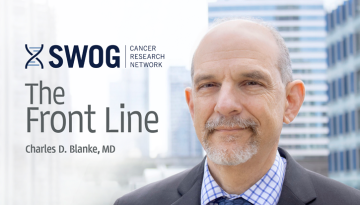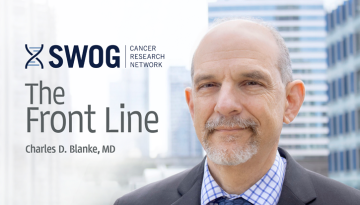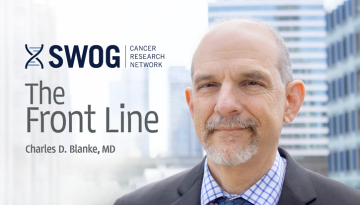Improving Patient Advocacy - At NCI & SWOG
Although SWOG has formally worked with patient advocates in a variety of ways since the 1990s, it was in 2008 the group brought together a core with individual representation of multiple disease committees.
This advocate group was formalized by the board of governors as the patient advocate committee in 2013.
Anyone who has followed the progress of this group/committee can’t fail to be impressed (even awed) by the growth in the scope and the effectiveness of their contributions – particularly how they have materially improved SWOG clinical trials and made those trials more responsive to patient needs.
Some insight into how our patient advocate committee has advanced so markedly can be gleaned by reading an article published online last month in the Journal of the National Cancer Institute: “Improving Patient Advocacy in NCI Scientific Steering Committees and Task Forces.” The lead author is Rick Bangs, chair of said patient advocate committee.
The article focuses on the NCI’s patient advocate steering committee (PASC), but many of the initiatives it describes were adapted from procedures and materials first implemented in or developed for SWOG.
The PASC brings together patient advocates from the NCI scientific steering committees and their task forces. In 2016, the PASC elected Bangs and Kim Norris, of the Lung Cancer Foundation of America, as co-chairs. The two served in those roles until 2020, and Norris is senior author on the JNCI article. With their coauthors, Bangs and Norris outline the changes they made during their time as co-chairs.
As PASC co-chairs, they targeted five areas for improvement.
- They refined and expanded the template that advocates on the scientific steering committees use in evaluating proposed study concepts. The result is a set of evaluation questions in five domains that would look familiar to those who have seen a SWOG patient advocate presentation during triage review of a new concept (i.e., importance of concept, design, burden on patient, eligibility criteria, and accrual feasibility).
- They worked to clarify the roles of patient advocates on the steering committees and task forces, how those roles differed from each other, and how they differed from the roles of patient advocates working within the NCTN cooperative groups. In drawing these distinctions, the article includes a table that grew from SWOG work that detailed the activities a SWOG patient advocate might expect to be engaged in across the define/review/design/implement/share trial lifecycle milestones.
- To develop “human capital” (which they marked as their top priority), Bangs and Norris identified a set of critical competencies in four areas that advocates need to demonstrate to succeed in their role on a steering committee or task force. This set is adapted from a set that had been delineated by SWOG’s patient advocate committee to foster professional development of its members.
- They worked to focus the mission and scope of the PASC itself and the ways in which it contributes to the education of NCI advocates.
- And finally, they conducted a survey that helped define what success looked like for PASC advocates and how that success and impact could best be measured. The metrics are similar to some developed here at SWOG.
Some of the collateral and supplementary material linked from the article clearly reflects materials used, in earlier incarnations, by SWOG’s patient advocates. Thus, the JNCI article is a chance to educate yourself on the work and history of not only PASC advocates but also SWOG advocates.
And in envisioning the near future for PASC advocates, we could consult the recent past for SWOG advocates, which seems pretty accurately described in the article’s closing line: “Advocates armed with the capabilities identified herein will confidently and eloquently communicate the voice of the patient and deliver value that aligns with the potential for the role.” Yep!
Other Recent Stories



